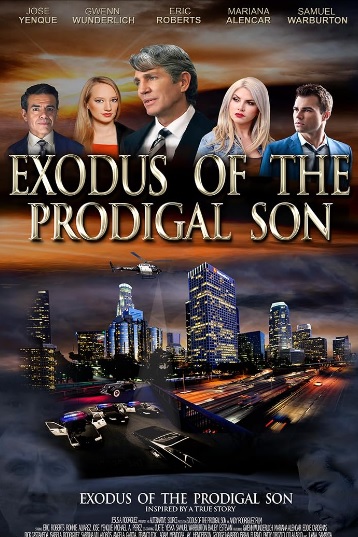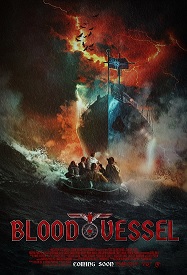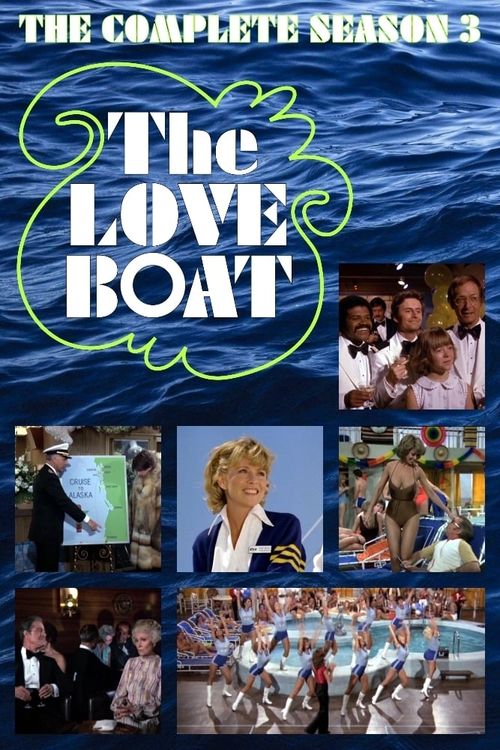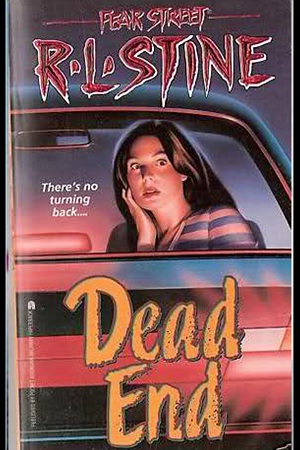As you can tell from looking at the poster for this 2020 film, Eric Roberts is in Exodus of the Prodigal Son. Even though he’s given top-billing on the poster and is pictured as being at the center of all of the characters, Eric Roberts doesn’t really do much in this movie. This is one of those films where Eric Roberts probably shot all of his scenes in a day. Whenever we see him, he is relaxing behind his desk. I don’t think he even bother to change his clothes between scenes, despite the fact that the film plays out over a few days.
Eric Roberts is playing Chief Roberts, which really does contribute to the feeling that he just showed up on set and decided to be a part of the movie. Chief Roberts is always encouraging his detectives to go out and catch the bad guys. Apparently, there’s been a string of child murders and Roberts sure would like to capture whoever was responsible for them. But it also appears that the Chief mostly just wants an arrest. He really doesn’t seem to care if the people who are arrested are guilty or not. It’s a bit hard to know what to make of Chief Roberts. Then again, it’s difficult to know what to make of anyone in this movie.
The plot is damn near incoherent but, as far as I can tell, Jordan (Ronnie Alvarez) and Eddie (Pablo Nunez) are brothers who were raised in the church and taught to follow the straight and narrow path. But then Eddie stops going to church and starts hanging out with wannabe gangsters like Mark (Adam Mendoza). Mark is big into Santeria and his idea of flirting is to talk about how he gets good luck from sacrificing goats on an altar that’s built for La Santa Muerta. When Eddie’s friend, Steve (Samuel Warburton), stops by Jordan and Eddie’s place to talk to Eddie about returning to church, Mark gives Steve a drink that has been laced with some sort of drug. Steve overdoses. Eddie goes to the hospital with Steve. Meanwhile, Mark decides to pull a knife on Jordan which leads to a struggle in which Mark somehow stabs himself in the neck and dies. Now, with the help of his biker uncle, Jordan has to go on the run.
Who is the prodigal son in this scenario? I’m not really sure. The whole point of the parable of the prodigal son is that the prodigal chose to leave home on his own. He wasn’t fleeing the police or anything like that. So, Eddie would seem to be the prodigal son but he’s not the one who goes into hiding or learns a spiritual lesson. Instead, that’s what happens to Jordan but, again, Jordan didn’t leave home because he wanted to. He left home because the cops were after him. It’s probably best not to worry too much about it. The plot here was obviously not meant to be followed.
There’s a lot to criticize about this film but really, the thing that took this film from bad to terrible was the sound. Some of the dialogue is muffled. Some of it is unreasonably loud. In one of his first scenes, Eric Roberts keeps bumping his wristwatch against the sound of his desk and the effect is deafening. Later, in the hospital, the beeping of Steve’s EKG monitor is so loud that it’s impossible to understand what anyone is saying. People, I think, tend to underestimate the importance of clear sound in a movie. It’s something we take for granted but when it’s not there, it’s enough to make you want to throw something at the screen.
Finally — and this is a spoiler — the film commits the sin of ending on a “It was all a dream!” note. So, does that mean that Eric Roberts was a part of the dream or did he really exist? It’s a question that’s far more intriguing than anything else about this particular film.
Previous Eric Roberts Films That We Have Reviewed:
- Star 80 (1983)
- Blood Red (1989)
- The Ambulance (1990)
- The Lost Capone (1990)
- Love, Cheat, & Steal (1993)
- Love Is A Gun (1994)
- Sensation (1994)
- Dark Angel (1996)
- Doctor Who (1996)
- Most Wanted (1997)
- Mr. Brightside (2004)
- Six: The Mark Unleased (2004)
- Hey You (2006)
- In The Blink of an Eye (2009)
- Enemies Among Us (2010)
- The Expendables (2010)
- Sharktopus (2010)
- Deadline (2012)
- Miss Atomic Bomb (2012)
- Lovelace (2013)
- Self-Storage (2013)
- This Is Our Time (2013)
- Inherent Vice (2014)
- Road to the Open (2014)
- Rumors of War (2014)
- Amityville Death House (2015)
- A Fatal Obsession (2015)
- Stalked By My Doctor (2015)
- Joker’s Poltergeist (2016)
- Stalked By My Doctor: The Return (2016)
- The Wrong Roommate (2016)
- Stalked By My Doctor: Patient’s Revenge (2018)
- Monster Island (2019)
- Seven Deadly Sins (2019)
- Stalked By My Doctor: A Sleepwalker’s Nightmare (2019)
- The Wrong Mommy (2019)
- Free Lunch Express (2020)
- Her Deadly Groom (2020)
- Top Gunner (2020)
- Deadly Nightshade (2021)
- Just What The Doctor Ordered (2021)
- Killer Advice (2021)
- The Poltergeist Diaries (2021)
- A Town Called Parable (2021)
- My Dinner With Eric (2022)









